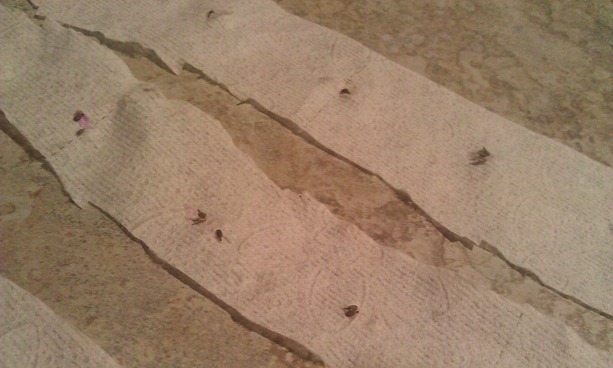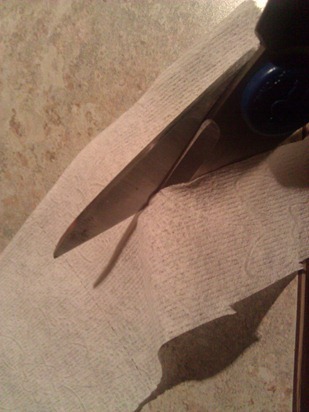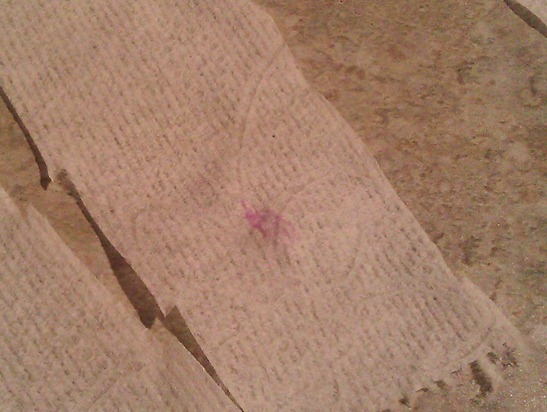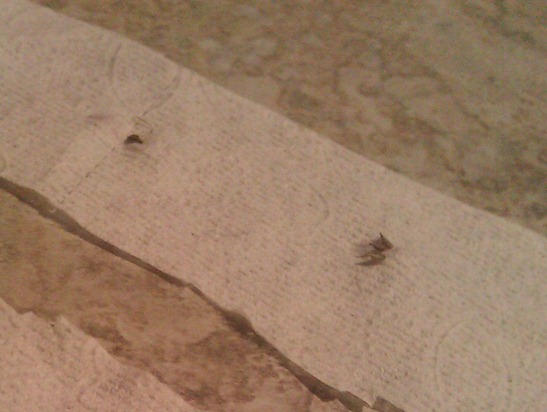Making your own toilet paper planting strips
12.8 years ago outdoor seed starting, seed planting sheets, seed planting strips
My previous attempt at making planting strips worked ok, lapsed a bit on the watering, but had a few surviving carrots. This time around I decided to go with the classic technique at making planting strips with simple toilet paper.
1. Start with single ply. If you buy the fancy double-triple ply toilet paper you will want to pull them apart to start with a single layer. This will make it even easier for your seeds to push their roots through the paper.
2. Cut to appropriate widths. You should be able to get four lengths of planting strip (eight lengths for double ply) by cutting the paper lengthwise 4 times. In my case I only needed 3 so I simply cut mine into thirds.
3. Apply some glue using a glue stick. Hold one end of the paper and use a little dap of glue for the appropriate spacing for my carrots I did just a little under 2 inches (just eye balling no measuring required.
4. Attach the seeds. Simple drop a few seeds in the area and press gently with your finger to ensure they are in place. I then pick up the paper and lightly shake off any seeds that did not stick and reapply seeds as needed.
5. Plant the strips. There is no reason to wait for these to dry, you can plant them immediately or wait a few days/weeks until you are ready. Lay in the desired location, cover will a bit of soil and give a light watering. In a few weeks you should have perfectly straight and spaced rows the seeds of your choice.
Growing carrot patterns with DIY seed planting sheets
12.9 years ago carrot, outdoor seed starting, seed planting sheets
My daughter likes to plant seeds but when working with smaller seeds it can be difficult to plant these seeds especially the farther the location is from edge of the garden bed. I have been thinking about solving this problem with a seed strip which can be made using burlap, newspaper, toilet paper, or any sort of paper for that matter. Next you simply stick the seeds to the paper at the appropriate spacing, let them dry and roll out as far as you want to plant. This allows you to get your seeds ready in the comfort of your favorite chair to prepare your seeds and not hunched over your garden with an aching back.
I a simple seed planting strip would have done well for what I was planning but I decided to go with the creation of my own carrot seed planting strip template that allows you to grow in the pattern of the vegetable you are growing. Completely not necessary I know but it kept my daughter occupied working on the “craft” indoors this morning.
Step 1: Get you materials. Start by downloading and printing a carrot seed planting strip template. In the picture below I printed out two copies and glued them together for a few extra carrots. Next you need some glue, a great option is to mix a little flour and water together to the consistency of toothpaste, but I wanted to keep the mess to a minimum and used good ole school glue stick.

Step 2: Glue on the seeds. Take a small dab of your glue and put a drop on each circle on the template. Drop a 1-2 seeds on each glued circle and allow to dry. Once dry I give the paper a quick shake to find any seeds that did not stick and reapply if needed.
Step 3: Plant your seeds. Make a flat surface with your trowel moving a small layer of soil from your garden bed. Lay down your paper carefully on the soil.
Finally over your paper with a small layer of soil that you removed previously.
Step 4: Water Thoroughly. You need to hydrate the seed to begin germinating but you also want to start breaking down the paper and glue to not inhibit those young roots from penetrating the paper.
This was a fun project to do with my daughter, but also considering this is a good way to get some prep work done ahead of time to make the take of planting (here in WA is many times in the rain) a much quicker task. This can be great for crops you grow multiple times per season. You can get your seeds out once, make your seed planting sheets with the appropriate planting dates and bring them out to the garden as needed.











